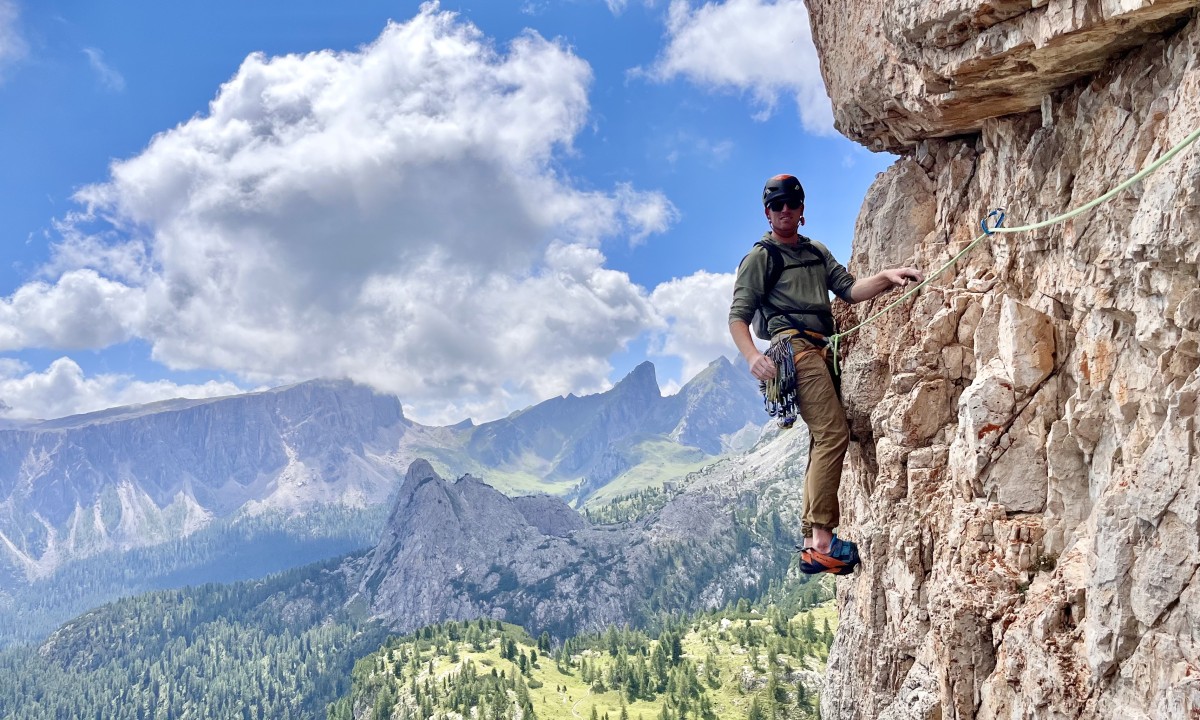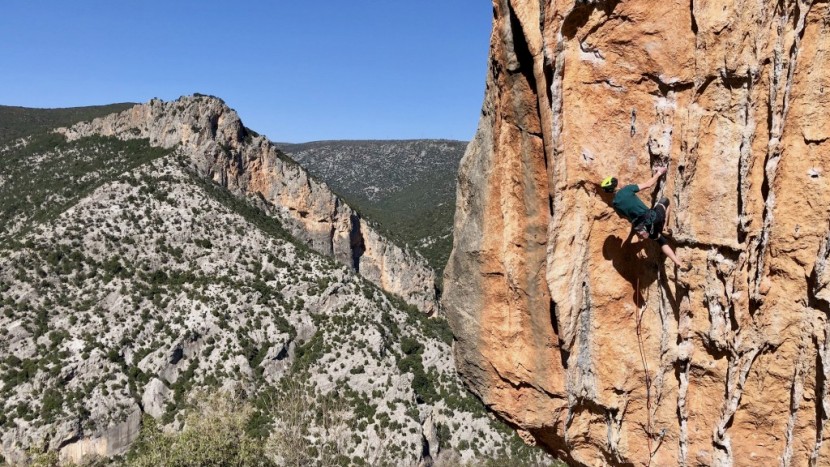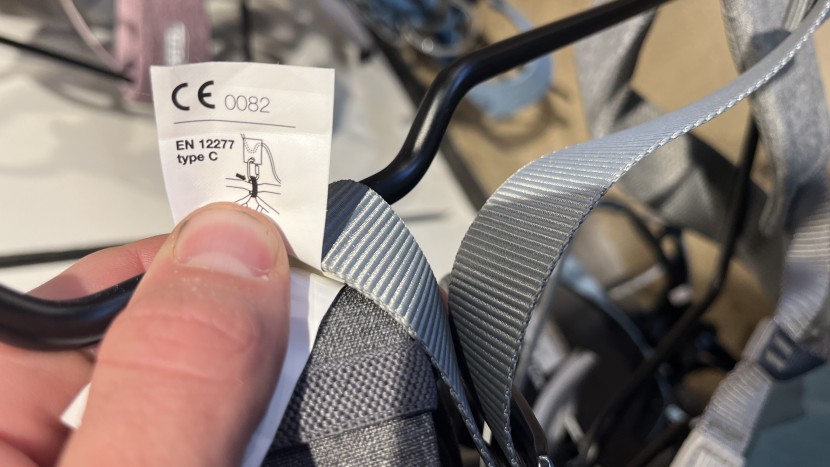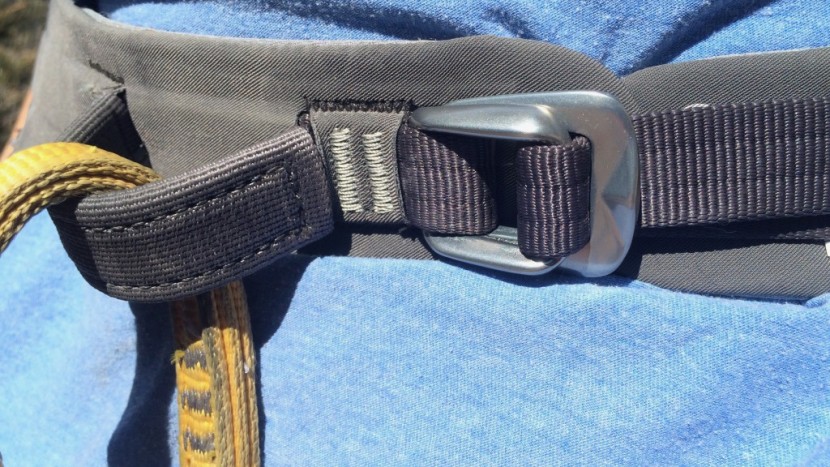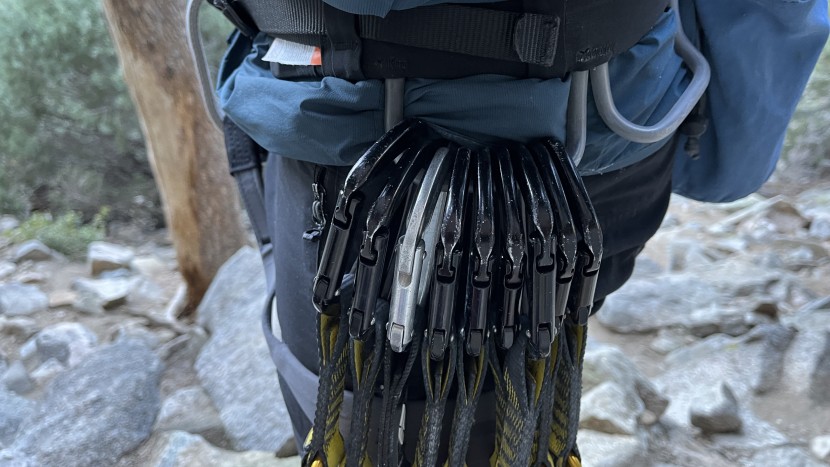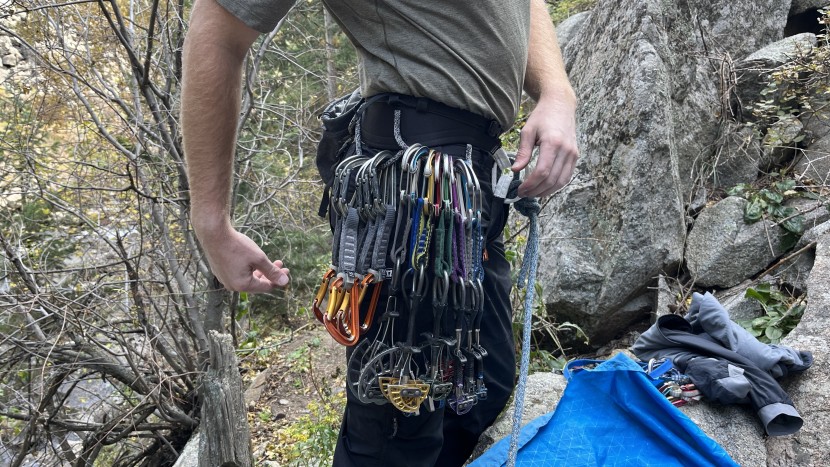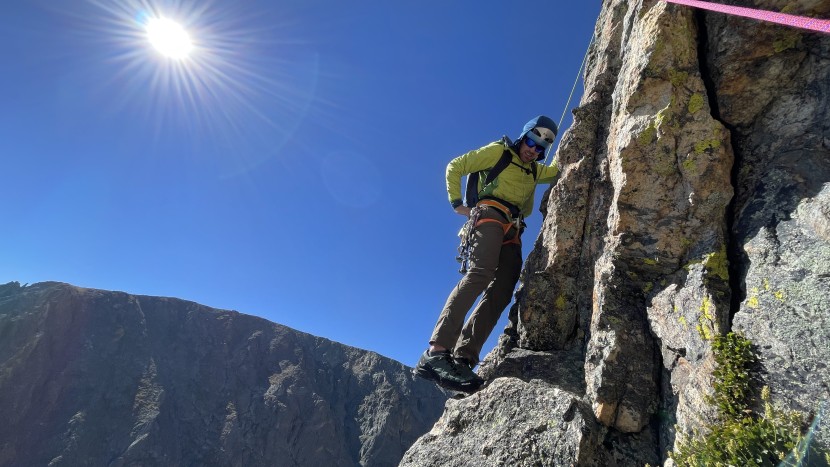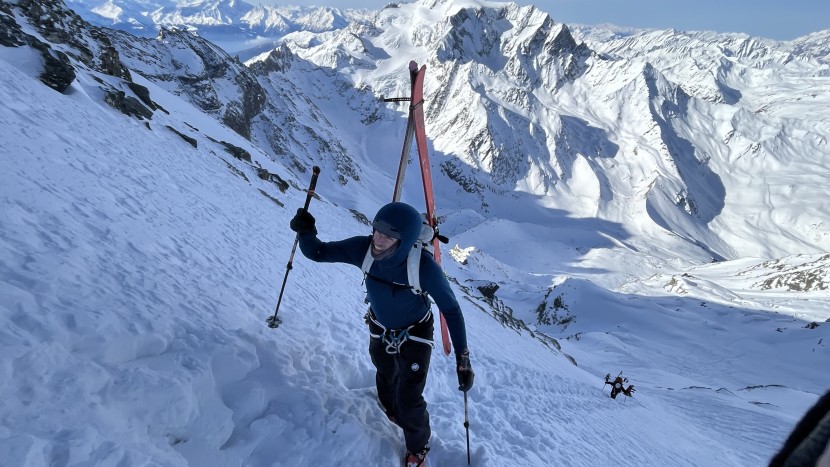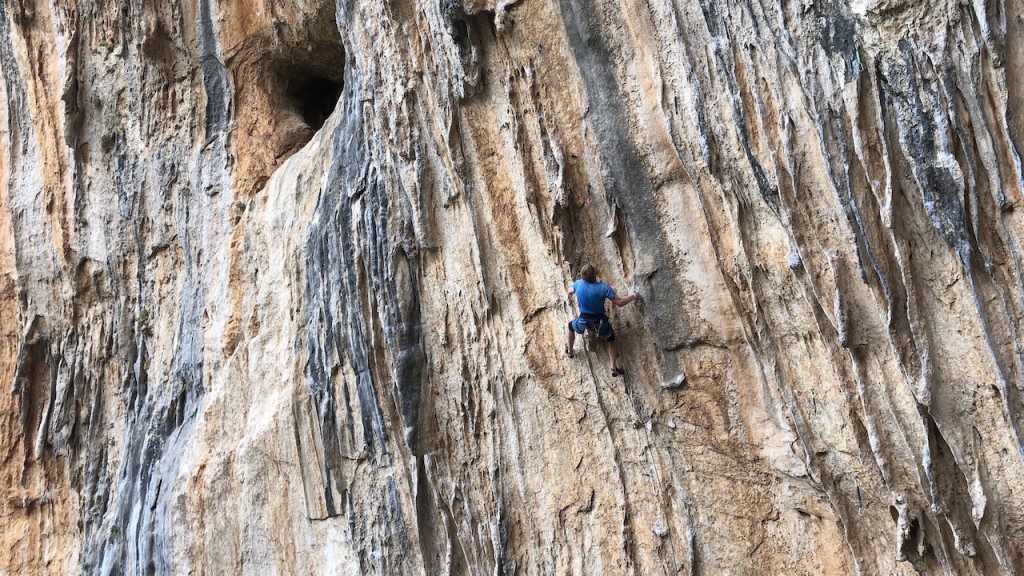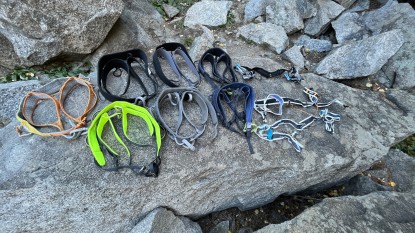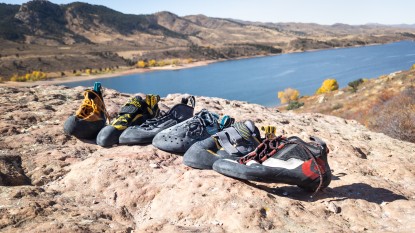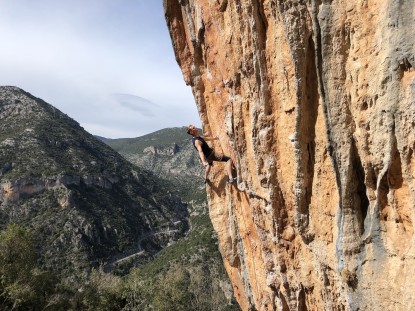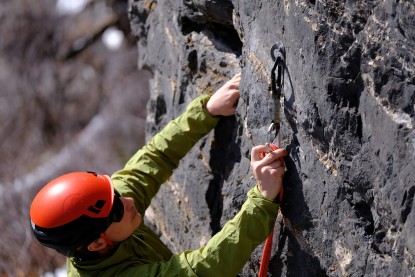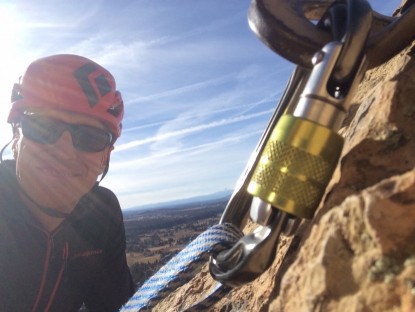This article is intended to help climbers of all experiences and ability levels choose the right harness. Beginner climbers can use almost any climbing harness, whereas more experienced and skilled climbers will prefer a more specialized harness for different climbing styles. We discuss some of the most important attributes of a climbing harness and walk you through a step-by-step buying process based on which type of climbing you intend to do most often. Afterward, circle back to our review of the best climbing harnesses and put that knowledge to good use in your purchasing. While the advice presented here will likely work just as well for women as it does for men, we also have a Women's Climbing Harness Review.
Do I Need to Buy a Climbing Harness?
If you are new to climbing and don't have a harness, then you will need to buy one. It's one of the first pieces of equipment a beginner will need to buy, along with shoes and a belay device. Any sort of roped climbing requires the climber and belayer to both have a climbing harness, so the only type of climbing that one can do without a harness is bouldering. If you cannot afford a harness immediately, then bouldering in a gym can be a fantastic way to practice climbing movements and build the necessary strength for this sport before taking up roped climbing.
All climbers need to have their own climbing-specific harness. For those new to the sport, it is important to realize that other forms of safety harnesses – such as those designed for tree climbing or trimming, construction work, or other high-angle work or rescue applications – are not suitable for climbing.
Safety Ratings
Harnesses are tested and certified for use while climbing. Be sure to look for the CE or UIAA logos on the harness tags or packaging. All of the harnesses in our review are certified for climbing. As long as you use your harness correctly, it is plenty strong enough to survive the forces put upon it.
There are three important parts of every harness that meet safety standards: the waist buckle, the belay loop, and the tie-in points on the waist and leg loops. Waist buckles need to be doubled back (as they all are automatically in the designs we have tested) and must have at least a three-inch long tail of webbing.
The belay loop and hard tie-in points are the only strength-rated attachment points on a climbing harness. This means that you must tie in or belay through the two tie-in points or the belay loop. Any other part of a harness is not strength-rated, and not designed to be tied into.
Features of a Climbing Harness
In general, harnesses will all have the same basic features: two leg loops, a waist belt with auto-locking buckles, a belay loop that joins the leg loops to the waist belt, and gear loops along the sides of the waist belt for clipping in gear. These features will be found on nearly every climbing harness.
There are several optional features commonly found on harnesses, and the different combinations of these various features tend to dictate what a harness will be best used for. These include adjustable buckles on the leg loops, number and size of gear loops, and ice clipper slots that accommodate adding on ice clippers that hold ice screws or tools. Below, we discuss which feature sets tend to work the best for each style of climbing, and you can find out what features a harness includes on its individual product page.
Harnesses for Specific Types of Climbing
The most important question to ask yourself before buying a harness is, “What kind of climbing am I going to use it for?” While all types of climbing (except for bouldering) require the use of a harness, different harnesses will suit certain styles better and, in some cases, are designed specifically for one particular style. On the other hand, some harnesses are designed to be versatile enough for all types of climbing. Identifying your preferred styles of climbing will allow you to quickly narrow down the selection to a few considerations.
Sport and Gym Climbing
Sport climbing is the style of climbing where fixed bolts are clipped for protection. Gym climbing is sport climbing indoors, as bolts are the form of protection used in the gym. Top-roping, while possible regardless of what sort of protection was used to lead the pitch, generally has the same needs from a harness as sport climbing.
The main concern for a sport, gym, or top-roping harness is that it is comfortable for hanging and belaying. Sport climbing allows athletes to try difficult acrobatic moves, which means that falling and hanging are part of the sport. So, hanging comfort is the most important metric for these harnesses, while belaying comfort and mobility is another critical consideration. Features, including the size of gear loops, are less important since sport climbers only need to carry a handful of quickdraws, generally totaling less than 20 carabiners clipped to the harness at any time. If climbing in a gym, gear loops aren't needed at all. Adjustability isn't important either. Most sport climbing harnesses are designed with fixed elastic leg loops, as they are lighter, have a lower profile, and fit well over thin climbing pants. Sport climbing is rarely performed while wearing bulky pants, so the adjustability of a harness isn't as necessary as it may be for other disciplines.
Traditional and Multi-pitch Climbing
Traditional ("trad") climbing is the style where there are no fixed bolts to protect the leader, and one will have to place their own protection as they climb. Multi-pitch climbing involves climbing multiple rope lengths from the base of the climb and building intermediate belays along the route to reach the top.
The most important consideration when picking a harness for “trad” and multi-pitch climbing is the size and ergonomics of the gear loops. In contrast to sport climbing, trad and multi-pitch climbing often requires clipping 30-40 carabiners – attached to cams, nuts, slings, and anchor materials – to the harness to cover the demands of longer routes. Hanging comfort, belaying comfort, and mobility are also important metrics to consider, but many sport or gym climbing harnesses simply don't have enough room on their gear loops for all of the equipment you'll need to carry when trad or multi-pitch climbing.
Ice and Alpine Climbing
Harnesses designed for ice and alpine climbing require the most thought and specialization. Climbers venturing into the big mountains will need a light and packable harness that won't weigh them down on long approaches and that will pack down to a small size to fit into an alpine climbing backpack. In addition, these kinds of harnesses need to have gear loops large enough to accommodate equipment for long trad multi-pitch climbs. If ice climbing is a possibility, harnesses must be equipped with ice screw clipper slots.
Adjustability is another important consideration for alpine and ice climbing harnesses since the cold weather encountered during these pursuits demands more clothing. It is critical with an alpine harness to have more adjustment in the waist and leg loops in order to accommodate more or fewer layers. Hanging comfort, standing comfort, and mobility are also important metrics to consider, but performance in these areas is often sacrificed to shave weight.
Mountaineering and Technical Skiing
Mountaineering differs from alpine climbing in that the primary action more closely resembles walking or hiking, rather than actual climbing using our hands or ice tools. This can occur on steep snow, glacial ice, or rock. Technical skiing can require glacier travel, rappelling, or exposed climbing and mountaineering movement. The most important considerations for a mountaineering and technical skiing harness are weight, packability, and mobility. Typically, a relatively small amount of gear must be carried on the harness compared to alpine climbing routes, so gear loops can be minimalist. Hanging comfort and adjustability components are often sacrificed for weight savings.
Big Wall Climbing
Climbing big walls places an entirely different set of demands on your body and harness. Most climbers will be happiest if they purchase a specialized “big wall” harness. These harnesses are generally ultra-padded and have wide waist belts and leg loops, as the amount of time spent hanging in the harness can be measured in days. Be sure to get one that isn't too loose to start because, by the time you get to the top of the wall, you will surely have shed a few pounds! Climbers who are attempting to climb big walls free or in a day will want to use a multi-pitch trad climbing harness.
Harness Wear and Retirement
Climbing harnesses wear out over time and eventually need to be retired. If you are ever in doubt as to whether it may be time to retire your harness, the answer should automatically be: yes. Frankly, this goes for each and every piece of climbing gear that you own. Harnesses are made of nylon webbing, which must be stored properly in order to maintain its integrity over time. Inspect your harness regularly, and if anything at all seems amiss – such as torn or frayed webbing, extra wear, damage to the buckle, exposure to chemicals, or anything out of sorts — then you should retire your harness and purchase a new one.
Conclusion
A climbing harness is an essential piece of climbing equipment, so choosing the right one is important. First, identify the type of climbing you will mostly be doing and your budget, so that you can narrow down the list to the most appropriate choices. We hope you have found this article helpful, and happy climbing!

